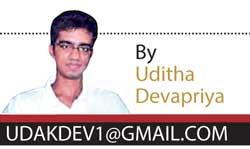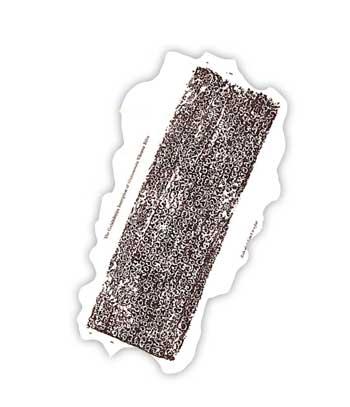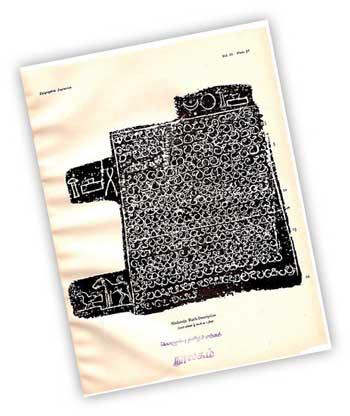Reply To:
Name - Reply Comment
 The rise of Kandy as a political subunit in the country can be attributed to three factors; the shift from Kurunegala to Gampola as the capital city, the onslaughts made on the Udarata by the Aryachakravartis from the north, and the rise to power of nobles and chief ministers at the time of the Gampola and Kotte kings. Literary evidence tells us that the shift to a new capital occurred because of internal strife. The emergence of two, sometimes three centres of power was inevitable: it was a necessary antidote to a harsh reality. By moving south-west, however, the country was moving away from a stable order. The shift was necessary, but it was also a necessary evil.
The rise of Kandy as a political subunit in the country can be attributed to three factors; the shift from Kurunegala to Gampola as the capital city, the onslaughts made on the Udarata by the Aryachakravartis from the north, and the rise to power of nobles and chief ministers at the time of the Gampola and Kotte kings. Literary evidence tells us that the shift to a new capital occurred because of internal strife. The emergence of two, sometimes three centres of power was inevitable: it was a necessary antidote to a harsh reality. By moving south-west, however, the country was moving away from a stable order. The shift was necessary, but it was also a necessary evil.
 Udarata was at the time of the Gampola kings known as the Malayarata. It was considered an effective barricade against foreign invaders. In the 15th century the capital city was, perhaps due to this, moved to Senkadagala Nuwara or Kandy. When the first Gampola ruler, Bhuvanekabahu IV, administered the country from there, his brother Parakramabahu V ruled from Dedigama. Whether or not such a system was amenable to them we do not know, but what we do know is that despite this the kings of Gampola regarded Udarata as a link between Rajarata and Ruhuna. Hence the interests to protect it from the north.
Udarata was at the time of the Gampola kings known as the Malayarata. It was considered an effective barricade against foreign invaders. In the 15th century the capital city was, perhaps due to this, moved to Senkadagala Nuwara or Kandy. When the first Gampola ruler, Bhuvanekabahu IV, administered the country from there, his brother Parakramabahu V ruled from Dedigama. Whether or not such a system was amenable to them we do not know, but what we do know is that despite this the kings of Gampola regarded Udarata as a link between Rajarata and Ruhuna. Hence the interests to protect it from the north.
Udarata was at the time of the Gampola kings known as the Malayarata
 Inscriptions at Kotagama and Lahugala tell us that the Aryachakravarti rulers flouted the legitimacy of the Sinhala kings by invading the region. The first attempt is said to have failed, but by 1359, according to an inscription at Madavala in Harispattuwa, the leader of the campaign, Ariyan of Singai Nagar or Mathandan Perumal, was collecting taxes from five villages in Gampola through Brahmins on behalf of Jaffna. To stop this, a powerful unifying figure had to emerge.
Inscriptions at Kotagama and Lahugala tell us that the Aryachakravarti rulers flouted the legitimacy of the Sinhala kings by invading the region. The first attempt is said to have failed, but by 1359, according to an inscription at Madavala in Harispattuwa, the leader of the campaign, Ariyan of Singai Nagar or Mathandan Perumal, was collecting taxes from five villages in Gampola through Brahmins on behalf of Jaffna. To stop this, a powerful unifying figure had to emerge.
The rise of such a figure was preceded for obvious reasons by the ascent of powerful chief ministers; the first of these, records tell us, was Senadhilankara. Because of their wealth, influence, and popularity, these ministers often became more powerful than the kings.
Senadhilankara was followed by the Alagakkonaras. Alakeshwara, a scion of this family, proved his mettle by defying the Aryachakravartis, building a fort at Kotte, chasing away tax collectors from the area in around 1369 AD, and destroying a fleet of ships at Panadura when they were despatched from Jaffna to quell him.
However, Sri Lanka was a monarchy, not a country of chief ministers. A fierce battle ensued between Alakeshwara and Parakramabahu VI. The battle was won by the latter, after which the minister is said to have been executed and the new king ruled from Rayigama, then Gampola, and finally Kotte.
Opposition towards family
 While this account is disputed one can argue that such conflicts did arise with the Alagakkonaras. In any case the alternative account is that the clan’s influence waned after the taking away of Vijahabahu, and that those who wanted Parakramamabahu VI to succeed opposed the reinstatement of the disgraced king; here also we can infer the opposition towards the family by the political administrators of the country.
While this account is disputed one can argue that such conflicts did arise with the Alagakkonaras. In any case the alternative account is that the clan’s influence waned after the taking away of Vijahabahu, and that those who wanted Parakramamabahu VI to succeed opposed the reinstatement of the disgraced king; here also we can infer the opposition towards the family by the political administrators of the country.
But despite the quelling of Alakeshwara, the aspirations of other sub-rulers could not be stemmed, and though Parakramabahu VI unified the entire country the threat of certain regions, in particular Malayarata, seceding from the capital continued to linger.
According to literary sources, the first such threat came in the king’s 52nd year from a sub-ruler or situ raja named Sojata (or Joti Sitana), who “neglected payment of his yearly tribute, and rebelled”, from Udarata; the Madavala inscription gives us the full name of the rebel as Divanawatte Lanka Adhikarin. Parakramabahu VI quelled the uprising by raising an army and committed it to his younger brother Ambulugala kumaraya.
Whatever hopes that may have been entertained of a unified polity, encompassing the north and Malayarata, soon dissipated upon the death of Parakramabahu VI. This had a great deal to do with the bitter leadership struggles that ensued after his death; his successor, Jayabahu II, was after the space of four years ousted and then murdered by Sapumal Kumaraya, who ascended the throne as Bhuvanekabahu VI and who soon faced a similar attempt on him by two disgruntled noblemen (Siriwardena Patiraja and Kuragala Himi), which he quelled. Paranavithana writes that this latter uprising represented “an upsurge of national sentiment” against a ruler of Malayali blood, though R. A. L. H. Gunawardena disagrees.
In any case the cycle of accession and deposal recurred upon Bhuvanekabahu’s death, and ironically this time it was the Prince of Ambulugala’s turn to act as ouster: literary sources tell us that Bhuvanekabahu was succeeded by Pandita Parakramabahu ascended the throne as Vira Parakramabahu.
Given the tenuous relationship between successors and aspirants in Kotte it comes to no surprise that sub-rulers in Kandy, taking advantage of the turmoil, should try to establish an independent political centre. To ensure the loyalty of the Kandyan regions and the stability of the union, both Parakramabahu VI and Bhuvanekabahu IV married princesses from the region.
Given the tenuous relationship between successors and aspirants in Kotte it comes to no surprise that sub-rulers in Kandy, taking advantage of the turmoil, should try to establish an independent political centre
Autonomous administrative region
 The founding father of Kandy, the Udarata as an autonomous administrative region, is usually considered to be Senasammata Vikramabahu. Vikramabahu came to power as ruler of the Kandyan kingdom around the same time that Bhuvanekabahu VI ascended the throne in the capital. The Palkumbura Sannasa and inscriptions at Alutnuwara and Gadaladeniya contain details about him: his reign seems to have lasted from 1473/74 to 1510.
The founding father of Kandy, the Udarata as an autonomous administrative region, is usually considered to be Senasammata Vikramabahu. Vikramabahu came to power as ruler of the Kandyan kingdom around the same time that Bhuvanekabahu VI ascended the throne in the capital. The Palkumbura Sannasa and inscriptions at Alutnuwara and Gadaladeniya contain details about him: his reign seems to have lasted from 1473/74 to 1510.
The continuation of the Mahavamsa puts down a different date for his ascension, at 1542/43.
According to this mythology, “Senkhanda nam Siriwardenapura” is said to have been Vikramabahu’s “birthright” (jamma-praveni). He is also said to have constructed several religious shrines, among them the Poya Maluva at the Malvatte Viharaya. And to consolidate his legitimacy, he went on pilgrimages to Adam’s Peak, supported attempts of the Chief Prelate Dharmakirti to reform the sasanaya, and made offerings to the Dantha Dathuwa.
In fact the honorific “Senasammata” points at the importance he attached to gaining the trust of his cohorts: he was indebted to the army for having supported him in his endeavour to secede from Kotte, and to this end, as the Gadaladeniya inscription tells us, he made a promise that no loss of life would be inflicted by his chiefs on the army.